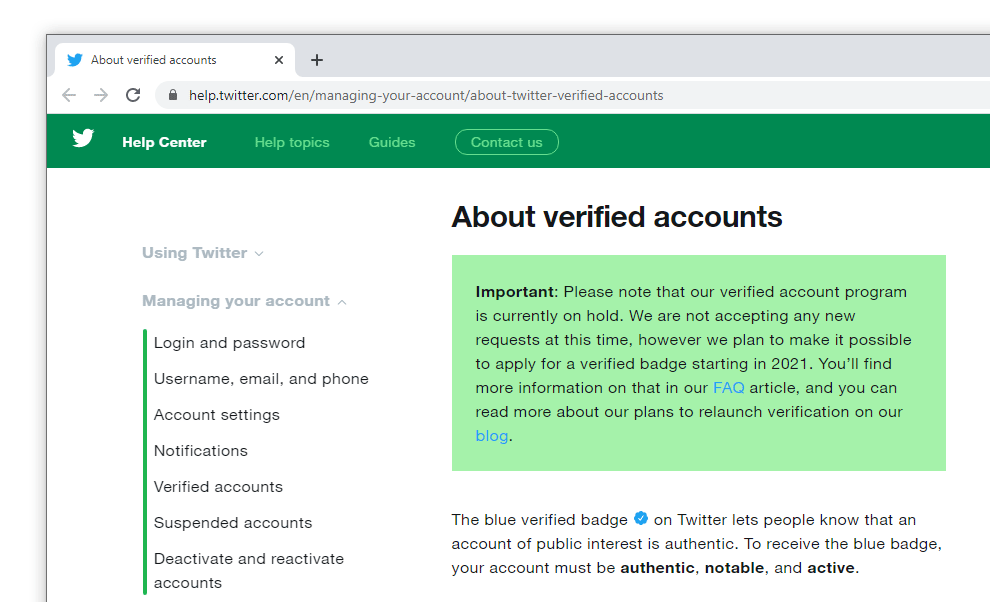
The world is changing fast, and on the web, things are changing even faster.
Long ago, Twitter users could apply for a verified account so they can have the 'blue checkmark' icon. But then in 2017, Twitter halted the public verification process.
"Verification was meant to authenticate identity & voice but it is interpreted as an endorsement or an indicator of importance. We recognize that we have created this confusion and need to resolve it. We have paused all general verifications while we work and will report back soon," said Twitter in a tweet at that time.
But in 2021, Twitter in a blog post said that it is planning to bring the application process back.
"We know how important it is to be able to express yourself and understand who you’re talking to on Twitter. So today, we’re sharing the start of our plans to revamp how people can identify themselves on Twitter, starting with verification and asking the public to share feedback on a draft of our new verification policy," said Twitter in an another blog post.
So here, after three years pausing the verification process, Twitter announced that it's planning to bring the application process back, in which anyone can submit a request for a coveted blue checkmark.
Thank you for sharing feedback on our verification policy. You helped shape the version that we’re sharing today.
Check out the specifics of the new policy and how you can apply for verification next year: https://t.co/It0z9R6mur https://t.co/LNgaeURDCM pic.twitter.com/dmFXJ02kU6— Twitter Support (@TwitterSupport) December 17, 2020
"But first, we need to update our verification policy with your help," Twitter said.
"This policy will lay the foundation for future improvements by defining what verification means, who is eligible for verification and why some accounts might lose verification to ensure the process is more equitable."
What this means, Twitter doesn't want to fall to the same hole it fell back in 2017.
By laying out the updated verification policy for the blue checkmark, Twitter wants to have a clear foundation to how it defines "the core types of Notable Accounts that are served by verification."
As a start, Twitter has identified six types of accounts to start. They include:
- Government.
- Companies, Brands and Non- Profit Organizations.
- News.
- Entertainment.
- Sports.
- Activists, Organizers, and Other Influential Individuals.
"The process will include asking applicants to select a category for their verified status and confirming their identity via links and other supporting materials," explains Twitter's blog post. "We plan to use both automated and human review processes to ensure that we are reviewing applications thoughtfully and in a timely manner."

Twitter is also making thing clear about users who are ineligible for the blue checkmark.
For example, parody accounts, or those made for fictional characters, those accounts that engage in "severe violations", spammy accounts, accounts that are associated with harmful activities and others cannot apply for the blue checkmark.
Twitter also explained how users can lose their verified status.
"In accordance with the Twitter Terms of Service, Twitter may remove the blue verified badge and verified status of a Twitter account at any time and without notice," Twitter explained.
The company said that users can lose their badge if they change your account name (@handle), if their accounts becomes inactive or incomplete, or no longer in the position that they were initially verified for - such as elected governmental officials who leave office.
Twitter can also remove the blue checkmark is the verified users impersonate or intentionally misled others on the platform, violate its policy, create hateful conduct, abusive and more.
"Under our policy, we may also remove verification from accounts that are found to be in severe or repeated violation of the Twitter Rules," reads the announcement. "We will continue to evaluate such accounts on a case-by-case basis, and will make improvements in 2021 on the relationship between enforcement of our rules and verification."
This reintroduction of the verification process should make many Twitter users happy. Most importantly, the updated policy should clearly explain who can apply and what can make the application rejected.